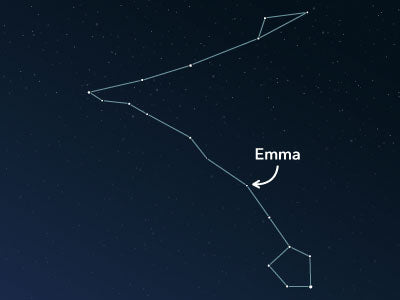The constellation Pisces
Caratteristiche
- Nome latino
- Pisces
- Emisfero
- Entrambi gli emisferi
- Visibilità
- September - November
- Area
- 889 deg²
- Stella più luminosa
- Kullat Nunu (HIP number 7097)
- Specialità
- Galaxies

The Pisces symbolizes two fishes that the constellation is also known as. It is one of the 48 constellations described by the Greco-Roman astronomer Claudius Ptolemy in ancient times. It lies on the ecliptic and is the name giver for the astrological sign Pisces. In their celestial area are a couple of deep-sky objects that are not visible to the naked eye.
Hemisphere, visibility, and area
The constellation Pisces stretches across the celestial equator and is visible from both hemispheres, appearing between the latitudes 84° N and 57° S. This makes it visible from all inhabited regions in the northern hemisphere. 57° S is south of the tip of Patagonia in Argentina and Chile.
The optimal time to observe Pisces in the night sky is from September to November.
The constellation lies on the ecliptic, meaning the sun, moon, and other planets pass through it. It is also one of the 12 zodiac signs of astrology. The sun is in the constellation every year from March 12th to April 19th. During this period, the constellation Pisces rises and sets with the sun and is therefore not visible.
In astrology, another period was determined for the same zodiac sign thousands of years ago. At that time, the sun passed through the constellation Pisces between February 20th and March 20th. But due to the earth's precession, this is now shifted by about a month. Nevertheless, today's zodiac signs are still determined based on the ancient period.
Another event takes place during this period. The ecliptic crosses the celestial equator in the constellation Pisces, marking the astronomical beginning of spring. The terms "summer solstice" or " vernal equinox" are also widely used for the time of this crossing.
To find the constellation in the night sky, it is helpful to look for its neighbors. Although the Pisces stretch over the sky with around 889 square degrees and are the 14th largest constellation, they are easily overlooked due to their faint stars.
Only three stars reach the third magnitude. The brightest is Kullat Nunu (Latin: η Piscium, Eta Piscium). It is also known as Alpherg in Babylonian. It has an apparent magnitude of about 3.62 and lies almost 300 light-years from earth. The star is around 26 times larger than our sun.
Along the ecliptic, the neighboring constellations Aquarius and Aries, also known as zodiac signs, border Pisces. Otherwise, one arm of the constellation (so to speak, a fish) reaches up to Andromeda while the other reaches towards Pegasus. Further neighboring constellations are Cetus and the Triangulum.
Specialties in the constellation
There are several galaxies in the Pisces constellation, but they are not exceptionally bright.
The most famous galaxy is the spiral galaxy M74 (Messier 74), also known as NGC 628. It lies immediately west of the star Kullat Nunu. The distance of the galaxy from the earth is estimated to be 30 million light-years. However, this is only an estimate, as the exact length is unknown.

Mythology
In Greek mythology, the constellation Pisces is associated with the love goddess Aphrodite and her son Eros. They are said to be pursued by Typhon, a horrible monster, and jump into the Euphrates River to escape.
From there, there are two interpretations. While one version describes Aphrodite and Eros transforming into two fishes to escape, another version says that two fishes come to help them flee.
There are also different accounts about the connected tail fins. In the first version, the tail fins are connected by a thread so that mother and son do not get lost in the depths of the water. In the other story, the tail fins are linked so that Aphrodite and Eros can hold on to them while they are pulled to safety.
Regardless, the fishes are ultimately placed in the sky as a constellation as a thank-you for their rescue. The connection of both fishes can be seen as a symbol of motherly love.
PubblicatoLeggi altri articoli interessanti

An overview of all 88 constellations
Learn more about all 88 constellations and read interesting information about the mythology, visibility, and features.

App Planetario
Discover the night sky with our planetarium app!
Available for iOS and Android.

Dai un nome a una stella nella costellazione Fishes
Name a star in a constellation and create something that lasts for eternity.